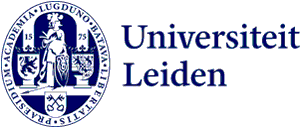
ERC Consolidator Grants for six Leiden researchers
From the effects of hormone fluctuations in women via the interior structure of giant planets to the prehistory of the languages and more: six Leiden researchers have been awarded a Consolidator Grant by the European Research Council.
The Consolidator Grant is for promising researchers with seven to 12 years of experience since completing their PhD. They can use the grant of up to 2m euros to fund their team of researchers and support staff for a period of five years.
The six Leiden Consolidator Grants go to:
Ellen de Bruijn – Faculty of Social and Behavioural Sciences, Psychology
Women experience drastic natural changes in sex hormone levels over their lifespan. These hormones are chiefly produced by the ovaries, but also exert regulatory effects outside the reproductive tract. Effects of hormones on the brain, for example, enhance a variety of behavioural, cognitive, affective, and motivational processes. Puberty, the menstrual cycle and menopause are hence all critical transition periods in a female’s life. Along with the hormonal shifts, these periods are associated with major changes in physical, psychological, and psychosocial factors as well as increased risk of depression, anxiety and stress-related symptoms.
Yet although the effects of fluctuating hormone levels on mood and behaviour are widely acknowledged, their possible influence is still ignored in most (neuro)cognitive and behavioural studies. The primary aim of Bruijn’s project is therefore to understand the effects of naturally occurring changes in sex hormone concentrations on neurocognitive functioning across the female lifespan.
Yamila Miguel – Faculty of Science, Leiden Observatory
The N-GINE project will allow scientists to study the interior structure of giant planets in the Solar System and Exoplanets as has never been done before. This will be accomplished by using data from the Cassini and Juno missions around Saturn and Jupiter, together with the detailed data on Exoplanet atmospheres obtained with the recently launched JWST space telescope. In this project, scientists will develop new computational tools, leading to a new era in the study of giant planet interiors, one that will revolutionise the way of interpreting observations in exoplanets and learning about their origins.
Anna Tummers – Faculty of Humanities, Leiden University Centre for Linguistics the Arts in Society
Forgeries in the style of older and more modern painters have recently caused much consternation. The ARTDETECT research project will focus on developing a new kind of connoisseurship. Art-historical methods, chemical analysis and advanced computer science will be combined in a systematic, coherent way to predict high risks. The aim is, first, to gain new insight into significant anomalies in forged paintings (and the main characteristics of comparable originals); and, second, to develop checklists and ‘smart tools’ (computer programs) that make it quick and effective to select potential forgeries for further examination; and ultimately to give a new scope and relevance to connoisseurship.
Jacqueline Hodge - Faculty of Science, Leiden Observatory
The majority of the Universe’s star formation occurred shrouded in cosmic dust, making it extremely challenging, historically, to obtain a clear view of young galaxy formation. At the same time, we are lacking direct observations of the cosmic gas reservoirs that are fueling the star formation in the early Universe. Fortunately, we are now on the verge of a breakthrough with the recently launched James Webb Space Telescope and the newly expanded capabilities of the powerful Atacama Large Millimeter Array. In her ERC-CoG project, `VOYAJ’, Hodge will use these revolutionary new instruments to reveal the hidden stars and cosmic gas in galaxies in the young Universe for the first time, providing a completely new view into the formation of early galaxies.
Michaël Peyrot – Faculty of Humanities, Centre for Linguistics
In his ERC-CoG project ‘The Silk Road Language Web’, Michaël Peyrot will investigate the prehistory of the languages of the Tarim Basin in Northwest China. In this area, situated along the Silk Road, manuscripts in a large number of Indo-European languages have been found, including Sanskrit, Khotanese and Tocharian. These languages have influenced each other following complex patterns, giving rise to a web of language contact going back to the early first millennium of the Common Era. On the basis of the evidence contained in this web Peyrot will unravel the prehistory of these languages and their speakers.
Gerbrand van der Heden van Noort - LUMC
Project will be added later.
See the full list of researchers who have received an ERC Consolidator Grant.
Photo: Image taken of Saturn during the Cassini mission.
